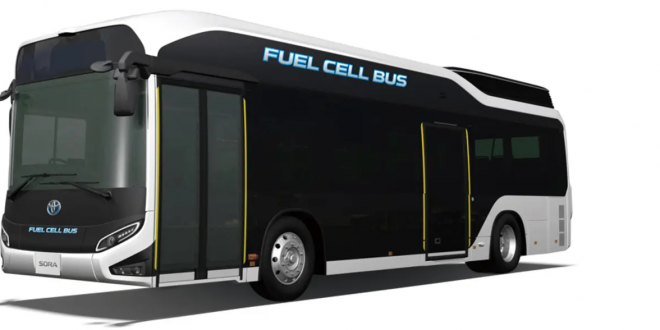Do you remember this CNET Road Show headline from 2019? “Toyota will use Tokyo Olympics to debut solid state battery electric vehicle.” The 2020 Olympics were supposed to showcase the zero emissions talents of the Japanese auto industry, with crowds of people moving seamlessly from place to place using self-driving electric or hydrogen fuel cell vehicles. Covid-19 devastated the auto industry, of course, but it also meant companies had an extra year to perfect their zero emissions vehicles.
In March 2020, Japanese Prime Minister Shinzo Abe told the world, “During the Olympics and Paralympics, cars and buses will run through the city powered by hydrogen, and the athletes’ village will run on electricity made from hydrogen.” A bold promise that was built on a lie. There is nothing “green” about those fuel cell powered buses. Then, as now, the supposedly “clean” hydrogen available in Japan is made primarily from natural gas at existing chemical plants using a process that emits copious amounts of carbon dioxide.
Things aren’t going to improve for Japan’s vaunted hydrogen economy any time soon. The country’s plans for a future supply of hydrogen amounts to importing large amounts of it from Australia, where it will be made from coal using carbon capture technology that does not exist.
Even if there was a supply of green hydrogen, the fuel cell buses Toyota has been selling since 2018 have failed to live up to their promise. According to the Financial Times, the economics just don’t pencil out for them. To begin with, they cost $900,000 for a 6 year lease compared to $220,000 for a diesel-powered bus with a useful life of 15 years.
To get the first 100 buses into service, local and national authorities had to pony up subsidies to cover 80% of the lease cost. Even that is not enough to make them competitive. “The fuel costs are also higher,” says Daisuke Harayama, who is in charge of operations at Tokyu Bus, a private company that has introduced two of the fuel cell buses. “The fuel cost is 2.6 times higher for FCVs over diesel.” Most bus terminals in Japan also have no hydrogen refueling capacity, meaning the buses have to be driven to the nearest hydrogen fueling station, which takes time and costs money.
Harayama adds, “I think it will be hard to go to fuel cells for now. We don’t look at it as whether fuel cells are good or bad. There’ll come a time when we can no longer use diesel so we need to think about the options.”
The Financial Times concludes, “For now, however, the environmental benefit of the buses that will ship Olympic athletes and officials around the city is hypothetical. The Olympic flame (which is powered by hydrogen) will burn prettily, but to make a true transition to a hydrogen society will require years of patient effort — and some big breakthroughs on cost.”
As for solid-state battery technology from Toyota, that is pie in the sky for now as well. Even with significant support from the Japanese government, the timeline for solid-state batteries from Toyota stretches far into the foreseeable future.
No one can be faulted for dreaming big. Elon Musk certainly has and things have turned out fairly well for him and Tesla. But the hydrogen saga is a Japanese nightmare. The government and major corporations like Toyota are banging their heads against a brick wall trying to find a way to avoid being followers in the EV revolution instead of leaders, but it isn’t working.
Hydrogen may hold significant promise when it comes to lowering carbon emissions in the steel industry, but as a transportation fuel, it simply can’t compete with battery electric vehicles. Insanity is defined as doing the same thing over and over and expecting different results. The torrent of promises and lack of results from Toyota are just sad to see. What Toyota and the Japanese government are doing is almost too painful to watch.

 Iran Energy News Oil, Gas, Petrochemical and Energy Field Specialized Channel
Iran Energy News Oil, Gas, Petrochemical and Energy Field Specialized Channel



